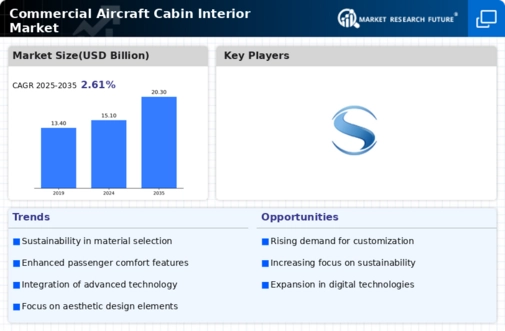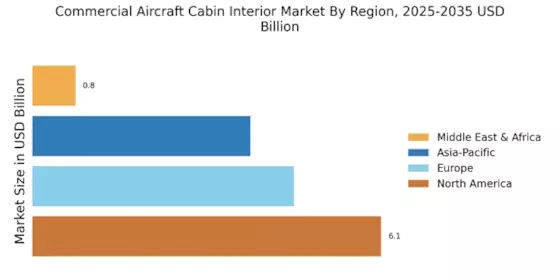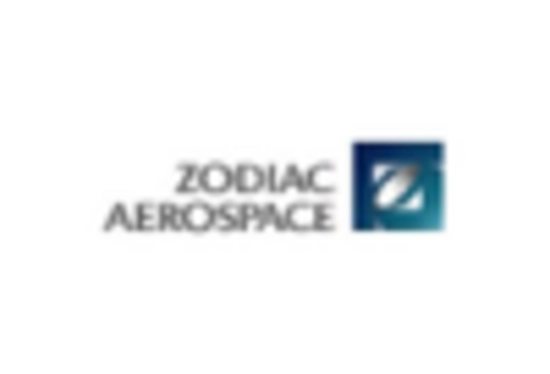The Commercial Aircraft Cabin Interior Market is currently characterized by a dynamic competitive landscape, driven by innovation, sustainability, and technological advancements. Major players such as Boeing (US), Airbus (FR), and Safran (FR) are at the forefront, each adopting distinct strategies to enhance their market positioning. Boeing (US) focuses on integrating advanced materials and smart technologies into cabin designs, aiming to improve passenger comfort and operational efficiency. Meanwhile, Airbus (FR) emphasizes sustainability, actively pursuing eco-friendly materials and energy-efficient designs to align with global environmental standards. Safran (FR), on the other hand, is investing heavily in digital transformation, leveraging data analytics to optimize cabin layouts and enhance the passenger experience. Collectively, these strategies not only shape the competitive environment but also reflect a broader industry trend towards innovation and sustainability.
In terms of business tactics, companies are increasingly localizing manufacturing and optimizing supply chains to enhance responsiveness and reduce costs. The market appears moderately fragmented, with a mix of established players and emerging companies vying for market share. This competitive structure allows for a diverse range of offerings, yet the influence of key players remains substantial, as they set benchmarks for quality and innovation that others strive to meet.
In August 2025, Boeing (US) announced a partnership with a leading technology firm to develop next-generation cabin management systems that utilize artificial intelligence for real-time passenger feedback. This strategic move is likely to enhance Boeing's competitive edge by enabling more personalized passenger experiences and operational efficiencies. The integration of AI into cabin management systems could redefine how airlines interact with passengers, potentially leading to increased customer satisfaction and loyalty.
In September 2025, Airbus (FR) unveiled its new line of eco-friendly cabin interiors, which utilize sustainable materials sourced from renewable resources. This initiative not only aligns with global sustainability goals but also positions Airbus as a leader in environmentally responsible aviation solutions. The strategic importance of this move lies in its potential to attract environmentally conscious airlines and passengers, thereby enhancing Airbus's market share in a competitive landscape increasingly focused on sustainability.
In October 2025, Safran (FR) launched a new digital platform aimed at optimizing cabin space utilization through advanced analytics. This platform allows airlines to customize cabin layouts based on passenger demographics and preferences, thereby maximizing revenue potential. The strategic significance of this development is profound, as it underscores the shift towards data-driven decision-making in the aviation sector, enabling airlines to enhance operational efficiency and passenger satisfaction.
As of October 2025, the competitive trends in the Commercial Aircraft Cabin Interior Market are increasingly defined by digitalization, sustainability, and the integration of advanced technologies such as AI. Strategic alliances are becoming more prevalent, as companies recognize the need to collaborate in order to innovate and meet evolving consumer demands. Looking ahead, competitive differentiation is likely to evolve from traditional price-based competition to a focus on innovation, technological advancements, and supply chain reliability, as companies strive to offer unique value propositions in a rapidly changing market.


















Leave a Comment